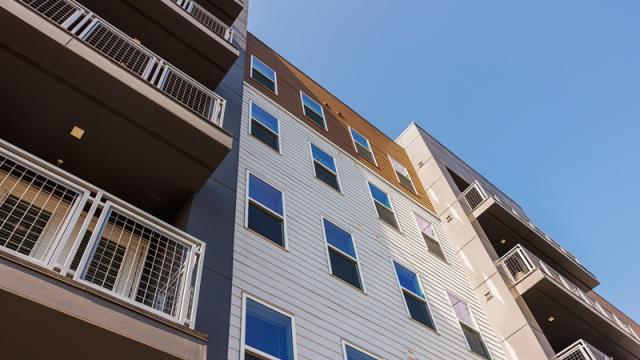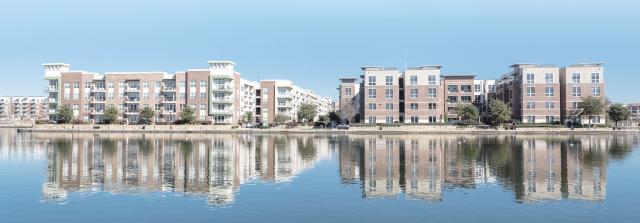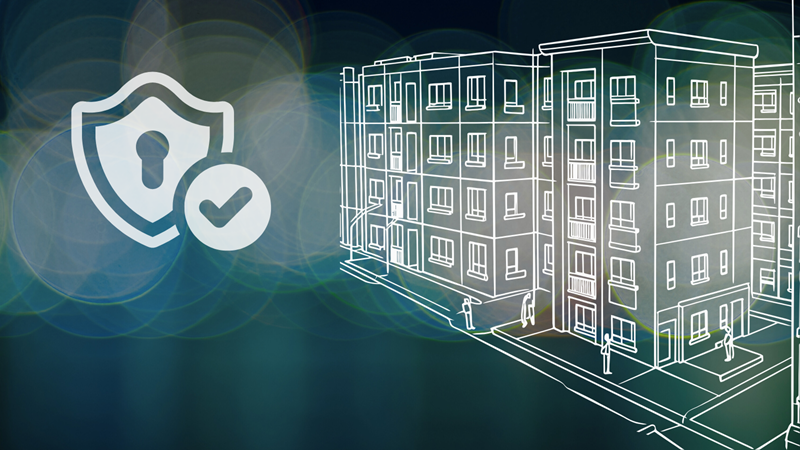
Safety is a hot subject in the multifamily world. Over half of renters consider safety and security to be one of their top considerations when selecting their next apartment, according to a recent survey by Apartments.com. When you market your property to prospective residents, what can you do to alleviate their concerns about security?
Explore nine ways to promote your apartments to safety-conscious renters. These approaches can improve security for your residents — and send your future residents a clear message that safety matters to your community.
1. Install a surveillance system

Having a surveillance system on your property can deter crime and show prospective residents that you take security seriously. Consider placing security cameras near entrances, in external hallways, and in outdoor common areas. Install license plate readers for onsite parking lots and vehicle entrances. Security cameras are a clear, visible sign to prospective residents that safety matters.
In the event that an incident does occur, surveillance footage can help your property staff and local law enforcement understand what happened and take measures to prevent future incidents. A surveillance system should also include sensors with alarms to contact staff or local law enforcement as needed. For maximum effectiveness, opt for 24/7 professional monitoring of the security footage.
2. Improve visibility

What do lighting and landscaping have in common? They can both contribute to better visibility.
Install lighting throughout your community, paying special attention to walkways and parking lots. Hallways and stairways should also be well lit. By eliminating shadowy hiding spots, appropriate lighting can deter crime and boost residents’ sense of security. It also helps residents navigate easily and avoid accidents.
For optimal visibility, choose white LED lights, which offer maximum brightness and minimal color distortion. Perform regular checks and maintenance of all your lighting fixtures. Light shields or light hoods can help prevent light from shining into your residents’ bedrooms.
Similarly, maintain your community’s landscaping to avoid concealed spaces. Keep trees and hedges trimmed to establish a clear line of sight for residents walking around the property at night, as well as for any surveillance cameras or security personnel you might have.
To further deter unwanted visitors, be strategic in your plant selection. Grow thorny plants below windows and near other sensitive entry points. Depending on your local climate, good options might include holly, roses, bougainvillea, agave bushes, barberry shrubs, or firethorn bushes.
Not only do thoughtful lighting and landscaping choices reduce the prospects for criminal activity, but they also help foster a sense of safety for residents walking around at night and show your prospective residents that your community is well-maintained.
3. Maintain entryways and access points
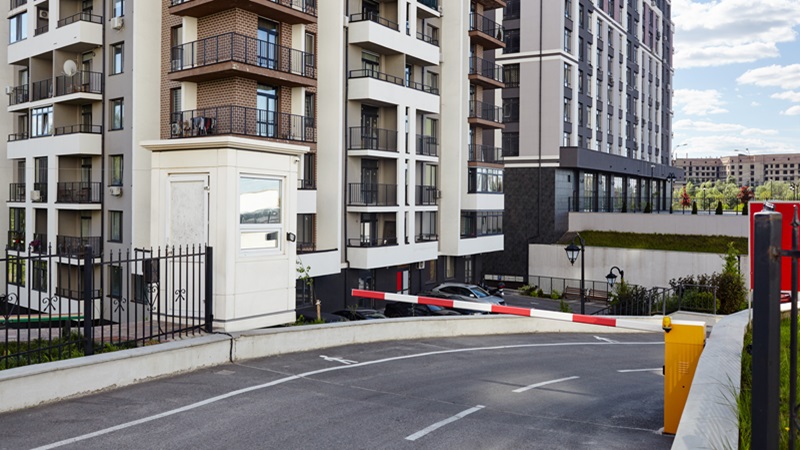
How easy is it to get into your community? Consider all your access points. These may include gates, garage entrances, building doors, and windows. A gate is only useful when it’s working, so keep your infrastructure in good condition. Perform regular inspections, tests, and repair work.
Strengthen exterior doors with reinforcement kits for doors and doorframes, and use security studs to protect any doors with exposed hinges. Windows can be protected by installing additional locking devices and reinforcing the glass with safety film.
Maintaining your infrastructure is important for everyday security — but it also improves your curb appeal. If a prospective resident comes to visit your property and sees a wide-open, broken gate while your marketing materials boast a gated community, this prospect is unlikely to be convinced that your community takes security seriously, no matter what you say on the property tour.
Stay on top of the latest tools and tricks that criminals use to enter apartment communities like yours. Many locks can be easily picked, and some access cards are simple to duplicate. Make sure your property relies on high-quality products that reduce the chances of forced entry. Limit the timing on automatic gates to prevent “tailgating” or “piggybacking.”
Gate codes and electronic access permissions can be another weak point. Remember to update your codes and permissions on a consistent basis, and never leave the factory-made default settings.
4. Always rekey or replace locks
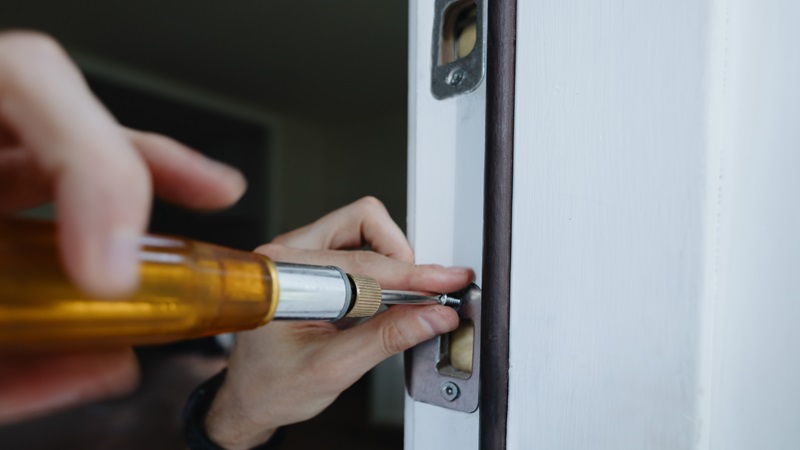
Even when residents must return their keys upon move-out, it’s important to rekey or replace the locks. Intentionally or not, residents may keep extra copies of their old keys, and these keys can also get misplaced or circulate among residents’ friends and family, pet sitters, and others.
Rekeying or replacing locks between residents helps ensure the security and privacy of your next residents, as well as protecting your units. Rekeying allows you to keep the same lock, while replacing the lock can help you swap out an old lock mechanism that shows signs of damage. Digital and smart locks can easily be reset between residents.
When rekeying and updating locks, explain the process to your new or prospective resident — or even have your maintenance technician perform the update in front of them. This can help relieve any fears about the security of their unit.
5. Be smart about your amenity spaces
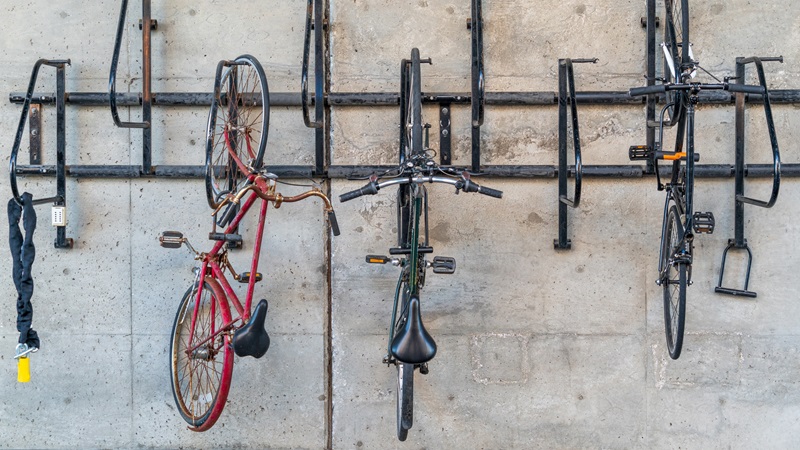
Certain community spaces can be at higher risk for break-ins. These include bike racks, package rooms, and storage areas. This can be an unpleasant experience for residents and staff alike, and the negative effect on your property’s reputation can multiply. When belongings are stolen, frustrated residents are likely to post negative comments and reviews on social media, and safety-conscious renters may cross your property off their list.
To reduce the chances for theft and unauthorized access, secure your at-risk amenity spaces. Make sure these spaces require a card or key to access — even if your main entrance is already gated — and limit access to only the residents who need them. Store bike racks indoors rather than in visible outdoor locations along walkways and roads. Package lockers should also be indoors within a locked building. Notify residents when packages arrive so they can pick them up promptly. When packages are left outside the package locker, report this to the delivery company to reduce the likelihood of it happening again.
If theft is common in your area, consider taking an extra step to keep your community amenities safe. Instead of descriptive labels like “Package Room” or “Delivery Hub,” opt for more ambiguous names for these kinds of amenity spaces. Use building numbers, like Building 10, or assign more abstract names. For example, if your community is named Oceanside Apartments, you could call your package pickup building “Sandy Shores.” Residents will know how to find these spaces, but their presence won’t be advertised to intruders with bad intentions.
6. Build strong relationships in the local community

An effective security strategy extends beyond the walls of your apartment community and involves the local neighborhood and surrounding community. Even if you have a dedicated security guard or doorman, cultivate relationships with your local police and fire departments.
For example, reach out to your local police department and get to know the crime prevention officer for your neighborhood. Find out if a neighborhood watch already exists. If not, work with your crime prevention officer to organize one for your apartment community.
Encourage your residents to get to know your local first responders and law enforcement. Invite local police officers and firefighters to host presentations or workshops for your residents. But you don’t have to reinvent the wheel. Keep track of any events the police and fire departments are already organizing for the local community, and encourage your residents to attend. Add these events to your resident calendar and newsletter. You can also provide coffee, pizza, or other refreshments to boost attendance.
Make sure staff and residents have an easy-to-access list of phone numbers to contact and know who to call about emergencies and non-urgent situations. If you have onsite security personnel, work with your local police and fire departments to align your emergency and non-emergency protocols and make sure any emergencies are immediately reported.
And it’s not just first responders and law enforcement. To stay in the loop, build connections with local businesses and other communities in the neighborhood.
7. Solicit input from your residents

While it’s important for your onsite staff to be well-informed about security, your residents also need to be part of your security strategy.
Make it easy for residents to report maintenance issues to your team, and respond to new tickets promptly. This includes problems within their own units, such as defective doors and windows, and issues they spot in shared spaces around the community — like that broken pedestrian gate. The sooner these issues are reported and resolved, the lower the chance of a security incident. When dealing with a high influx of requests, always prioritize those that affect security or resident health.
Give residents multiple ways to report maintenance issues, including an easy-to-use online portal. The process should be smooth and intuitive, and any forms should be tested to confirm they cover the majority of scenarios residents may be reporting.
Beyond maintenance, give residents a way to report security concerns and incidents. This can be a dedicated phone number, email address, or online portal. Encourage residents to report all issues, including suspicious and criminal activity.
Make it clear what qualifies — such as car vandalism, someone climbing over the fence, or bike theft — and what does not. Address other concerns — such as neighbors not picking up pet waste, violating the smoking policy, or parking in another resident’s designated spot — through other approaches outside the security channel.
Work with your local law enforcement to determine what kinds of security issues need to be reported directly to the police or fire department.
And it’s not just reporting issues. How safe do your residents feel? What are they concerned about? What have their interactions with security staff or law enforcement been like? Ask your residents for feedback in other ways, such as conversations with onsite staff, online surveys, and your newsletters.
Listening to resident feedback can be a powerful way to improve your community safety. Your residents have more “eyes on the street” than your property staff and can provide new insights. They are also more likely to feel positively about your community when you take their concerns seriously.
8. Promote resident engagement

Resident events are a great way to foster a sense of community and boost resident retention. But they can also be part of your security strategy.
When planning your resident events, consider safety and security as a topic. Educate residents about safety best practices though workshops, presentations, and events with guest speakers.
But even relaxing events like resident potlucks and movie nights can help improve security by giving residents an easy way to build community and get to know their neighbors. When residents feel connected to their neighbors and community, they serve as better “eyes on the street.” They’re more likely to help out their neighbors and know when something is amiss. Residents in engaged communities are also more likely to feel safer.
9. Be proactive

Don’t wait for security issues to crop up. Take a proactive approach. Stay educated about safety in the neighborhood, and explore online and local resources to learn more about crime prevention. Stay on top of crime data, identify your community’s security risks, and create a plan for how to respond to different types of common security issues, including unauthorized entry, vandalism, theft, break-ins, and violent crimes.
When prospective residents contact you or take a tour of your property, be prepared to address any questions about neighborhood safety and how your property protects its residents.
The better you and your team understand security risks and know how to prevent them, the more confident potential residents will feel about moving into your community.
Get more tips
Looking for more ways to promote safety at your property? Check out these cold-weather tips: The Winter Safety Checklist for Apartment Communities.




